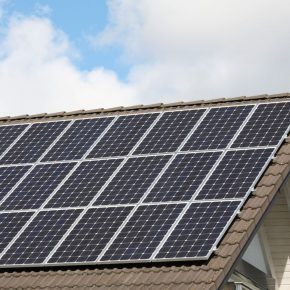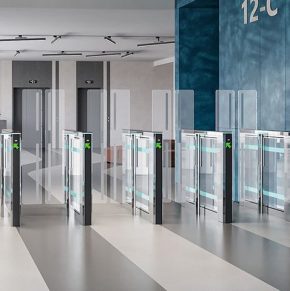
The Ultimate Guide to Determining the Right Size for Your Solar System
This ultimate guide will walk you through every step, from assessing your current and future energy needs to understanding the efficiency of different solar panels.
It will also delve into calculating the required panels, exploring battery storage options, and estimating costs and return on investment. By the end of this guide, you’ll have a clear, actionable plan to harness the sun’s power efficiently and cost-effectively.

Assessing Your Energy Needs
As you can read in this article – https://www.sunvalleysolar.com/blog/how-to-size-solar-system – determining the right size for your solar system starts with a thorough assessment of your energy consumption. You’ll need to calculate your household’s energy usage to get started. This involves gathering your utility bills and noting your average monthly usage. Here’s a step-by-step guide to help you through the process:
1) Collect Utility Bills: Gather your electricity bills for the past 12 months. This will give you a comprehensive view of your annual energy consumption.
2) Calculate Average Monthly Usage: Add up the kilowatt-hours (kWh) used over the year and divide by 12 to find your average monthly energy usage.
3) Account for Future Needs: Consider any future changes that might increase your energy consumption, such as purchasing an electric vehicle or planning a home expansion. Add these estimates to your current usage to get a more accurate picture.
By following these steps and considering future energy needs, you’ll have a solid foundation for determining the right size for your solar system. This proactive approach ensures that your investment in solar energy will meet your household’s demands both now and in the future.
Evaluating Your Roof’s Solar Potential
Before exploring solar energy, it’s crucial to understand your roof’s solar potential. Factors like roof orientation, angle, and shading significantly determine how much sunlight your roof can capture. For instance, a south-facing roof typically receives the most sunlight throughout the day, making it ideal for solar panels. Conversely, roofs with heavy shading from trees or other buildings might not be as effective.
First, you can measure your roof dimensions by following a simple step-by-step guide. First, use a tape measure to determine the length and width of each section of your roof. Multiply these numbers to get the area in square feet. If you’re uncomfortable doing this yourself, numerous online tools and professional services can assess your roof’s solar potential. These tools often use satellite imagery to provide accurate measurements and even offer insights into the best placement for your solar panels.
Different roof types also have varying levels of solar suitability. For example, flat roofs can be excellent for solar installations as they allow for adjustable panel angles. On the other hand, complex roof designs with multiple angles and slopes might require more customized solutions. Understanding these nuances can help you make an informed decision and maximize your investment in solar energy.
Understanding Solar Panel Efficiency
Solar panel efficiency is a game-changer when setting up a solar system. A solar panel’s efficiency determines how much sunlight it can convert into usable electricity. This directly impacts the number of panels you’ll need and, ultimately, the cost-effectiveness of your solar setup. Monocrystalline, polycrystalline, and thin-film are the three main types of solar panels, each with its own efficiency rates and costs.
Let’s break it down. Monocrystalline panels are known for their high efficiency and longevity but come with a higher price tag. Polycrystalline panels are less efficient but more affordable, making them a popular choice for budget-conscious consumers. Thin-film panels are the least efficient but are lightweight and flexible, ideal for unconventional installations.
For example, if you’re aiming for a 5kW system, the efficiency of your chosen panels will dictate how many you need. Higher efficiency panels like monocrystalline will require fewer panels to reach the same output as polycrystalline or thin-film panels. This affects the initial investment and the space required for installation. So, understanding the efficiency of different solar panels is crucial for making an informed decision.
Calculating the Number of Solar Panels Required
Determining the number of solar panels you need isn’t rocket science, but it does require some basic math and understanding of your energy needs. Let’s break it down step-by-step. First, you need to know your average energy consumption. This is usually measured in kilowatt-hours (kWh). You can find this information on your electricity bill. Once you have your monthly consumption, you can calculate your annual consumption by multiplying it by 12.
Next, you’ll need to consider the efficiency of the solar panels you plan to install. Solar panel efficiency is a measure of how much sunlight the panel can convert into usable electricity. Higher-efficiency panels will produce more electricity from the same amount of sunlight.
Here’s a simple formula to calculate the number of panels required:
1) Determine your annual energy consumption in kWh.
2) Find out the average sunlight hours per day in your geographic location.
3) Calculate the total annual sunlight hours (average sunlight hours per day × 365).
4) Divide your energy consumption by the total annual sunlight hours to get the needed kW.
5) Divide the kW needed by the efficiency of your chosen solar panels to get the number of panels required.
For example, let’s say your household consumes 10,000 kWh annually, and you live in a location that receives an average of 5 sunlight hours daily. Your total annual sunlight hours would be 5 × 365 = 1,825 hours. If you’re using panels with an efficiency of 20%, the calculation would be:
- 10,000 kWh / 1,825 hours = 5.48 kW
- 5.48 kW / 0.20 (20% efficiency) = 27.4 panels
To meet your energy needs, you would need approximately 28 solar panels. Geographic location plays a crucial role in this calculation. Areas with more sunlight hours will require fewer panels, while areas with less sunlight will need more. Always consider local weather patterns and seasonal changes when planning your solar system. By following these steps, you can accurately determine the number of solar panels required for your home, ensuring you get the most out of your investment in renewable energy.
Considering Battery Storage Options
Battery storage is a game-changer when diving into the world of solar systems. It allows you to store excess energy generated during the day for use at night or during cloudy periods. This maximizes your solar investment and provides a reliable backup during power outages. There are several types of batteries to consider, each with its pros and cons. Lithium-ion batteries are famous for their high energy density, longer lifespan, and lower maintenance. However, they come at a higher cost. Lead-acid batteries, on the other hand, are more affordable but have a shorter lifespan and require regular maintenance.
Estimating Costs and Return on Investment
When considering installing a solar system, the first thing that comes to mind is the cost. Several factors influence this, including installation fees, permits, and maintenance. Installation costs can vary widely depending on the complexity of your setup and the rates charged by your installer. Permits are another unavoidable expense, often required by local governments to ensure your system meets safety standards. Maintenance, although generally minimal for solar systems, is something you should budget for to keep your system running efficiently. But don’t let these costs scare you off.
There are numerous incentives and rebates available that can significantly reduce your initial investment. Federal tax credits, state incentives, and even local utility rebates can all contribute to lowering your overall costs. Experts advise checking the Database of State Incentives for Renewables & Efficiency (DSIRE) to determine what incentives are available in your area. Now, let’s talk about the return on investment (ROI).
Calculations
Calculating your ROI involves a few steps but is crucial for understanding the long-term benefits. Start by determining your upfront costs, including installation, permits, and additional equipment. Next, subtract any incentives or rebates you qualify for. Then, estimate your annual energy savings by comparing your current electricity bills to what they would be with solar power.
Finally, divide your net costs by your annual savings to determine how long your system will take to pay for itself. For example, if your total upfront cost is £20,000 and you receive £5,000 in incentives, your net cost is £15,000. If you save £1,500 annually on electricity bills, your ROI would be ten years (£15,000/£1,500). Over time, these savings can add up significantly, making solar an intelligent financial decision. By understanding these factors and following this step-by-step guide, you can make an informed decision about whether a solar system is a good investment for you.
Latest news

15th April 2025
West Fraser: CaberDek earns top marks from Home Counties carpentry specialist
A specialist carpentry sub-contractor covering housing sites across a large swathe of the Home Counties has come to value CaberDek from the West Fraser range for a variety of reasons: not least because the high quality panel product doesn’t destroy his operatives’ electric saws!
Posted in Articles, Building Industry News, Building Products & Structures, Building Systems, Case Studies, Restoration & Refurbishment, Retrofit & Renovation, Roofs, Timber Buildings and Timber Products, Wooden products
15th April 2025
GEZE: The Role of Access Control Systems in Enhancing Building Safety
Jane Elvins, Specification and Business Development Manager at GEZE UK, delves into the role of access control systems in enhancing building safety…
Posted in Access Control & Door Entry Systems, Architectural Ironmongery, Articles, Building Industry News, Building Products & Structures, Building Services, Doors, Facility Management & Building Services, Health & Safety, Restoration & Refurbishment, Retrofit & Renovation, Security and Fire Protection
11th April 2025
Don’t Do a Dave! It’s Time to Lock FIT Show 2025 in Your Calendar!
It’s that time again – FIT Show is back! You could be forgiven for thinking there won’t be much new to see when FIT Show returns to the NEC from 29 April – 1 May. Wrong!
Posted in Articles, Building Industry Events, Building Industry News, Building Products & Structures, Building Services, Continuing Professional Development (CPD's), Exhibitions and Conferences, Information Technology, Innovations & New Products, Restoration & Refurbishment, Retrofit & Renovation, Seminars, Training
11th April 2025
Insight Data: Boost construction success with project and prospect data
For those working in construction – in whatever capacity – the last few years haven’t been much fun. And according to the latest statistics, it would seem the challenges are continuing – Alex Tremlett, Insight Data’s Commercial Director, has more…
Posted in Articles, Building Industry News, Building Services, Information Technology, news, Research & Materials Testing
 Sign up:
Sign up: